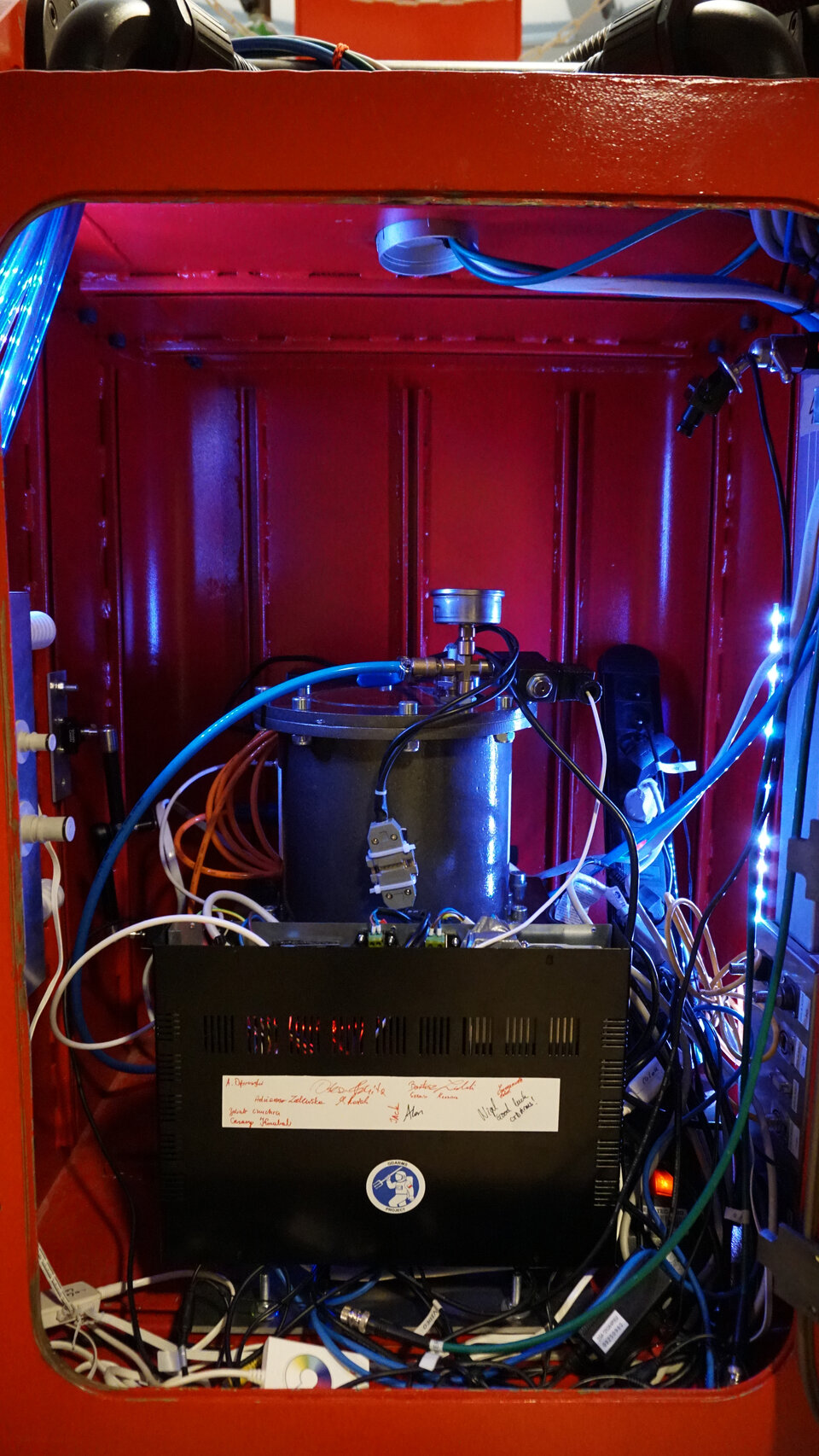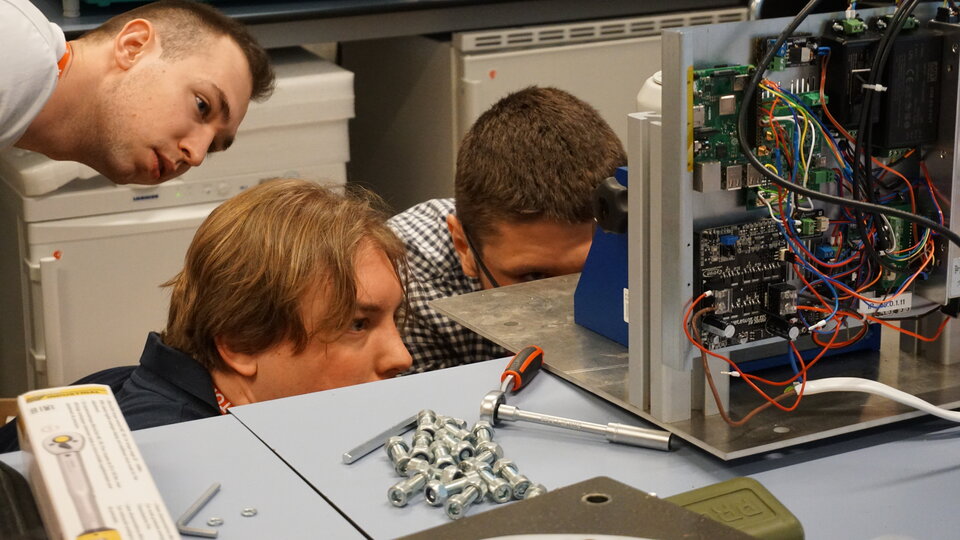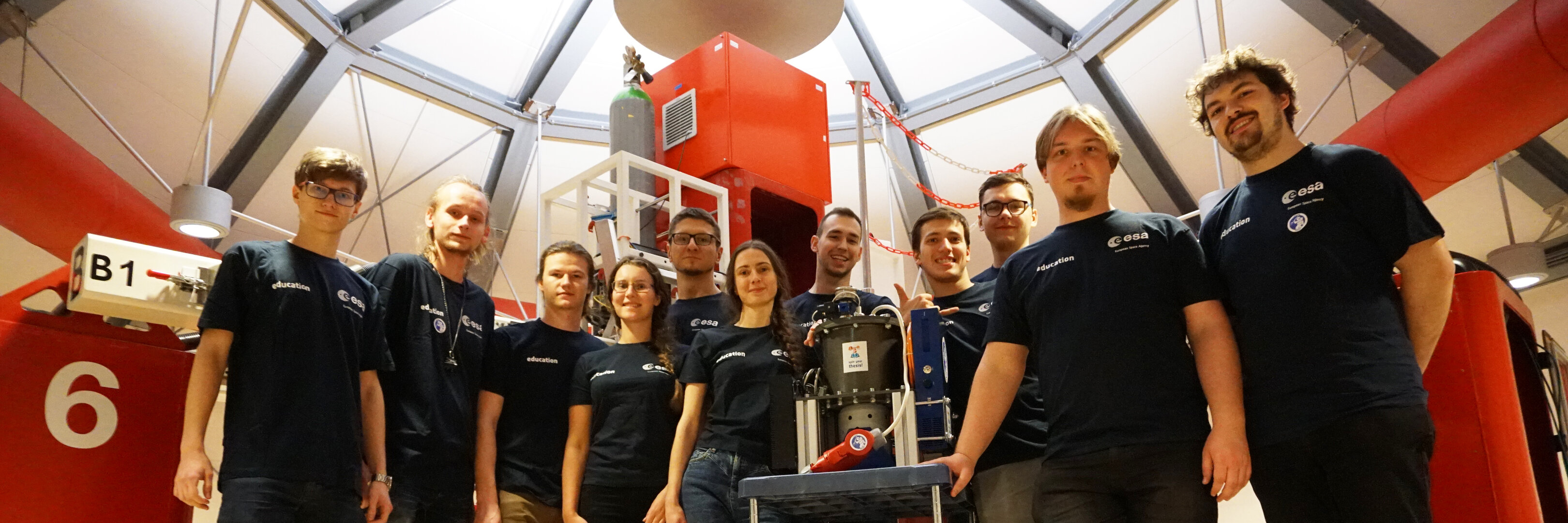GDArms Project: The art of turning a Centrifuge into a Rocket
A team from the Gdańsk University of Technology, Poland, successfully completed its experiment at ESA’s Large Diameter Centrifuge facility (LDC) last week.

For the past 8 years, the ESA Education Office has exploited this resource, thus complementing the vast array of platforms from micro- to hypergravity made available to students for research purposes. The LDC was built in 2008 in the European Space Research and Technology Centre in the Netherlands specifically for research focusing on altered gravity environment experiments. Through the Spin Your Thesis! Programme, university students can competitively gain access to the facility and run their research projects.
The GDArms team is composed of 15 Polish students ranging from bachelor to PhD. Their experiment was inspired from a previous project “HEGDEHOG”, realised in the framework of the REXUS/BEXUS programme. While HEDGEHOG aimed at performing measurements of the rocket environment, GDArms recreates it. The team developed a technology demonstrator mimicking a rocket environment for nanosatellite testing purposes. The payload, integrated in a thermal vacuum chamber itself mounted on a shaker, undergoes similar conditions of a real launch. The spin of the LDC recreates the acceleration-profile inherent to a rocket launch and its stages’ separation, the local vibrations are made by the shaker and the vacuum is applied according to the speed of depressurisation.
During the year of development, the team was supported by ESA Education and LDC experts. They attended a one-week training workshop at ESEC-Galaxia, the ESA Training and Learning Centre in Belgium. As the team was numerous, a hard work was put on the project management and tasks’ sharing. Due to delivery delay in long lead items, the team had not been able to participate to the campaign in September and got a second opportunity at the beginning of 2020. The 2.5 days with access to the centrifuge were put to good use to proceed to the last adjustments, integrate the payload in a gondola and perform spins at both constant g-levels and Soyuz launch acceleration profile.

At ESA, the visit of the GDArms team was much appreciated “Having such teams of students coming to the LDC is always enriching. In addition to successfully perform their experiment, they were highly enthusiastic to learn more about ESA and the space missions conducted at ESTEC.“ said Emmanuelle Aubert, YGT for gravity-related experiments. “Their boundless enthusiasm is contagious and we do everything to help them achieve their goals. We are confident that their first ‘professional’ encounter was positive for them and that they will pursue their career in gravity related research.” adds Nigel Savage, Programme Coordinator for university student experiments.
Now the campaign is over and the team is ready to get back to Poland with all the data about pressure, acceleration and temperature variations correctly recorded, ready for analysis. The GDArms experiment closes the chapter of the Spin Your Thesis! 2019 programme.
We are looking forward to the SYT! 2020 campaign!


